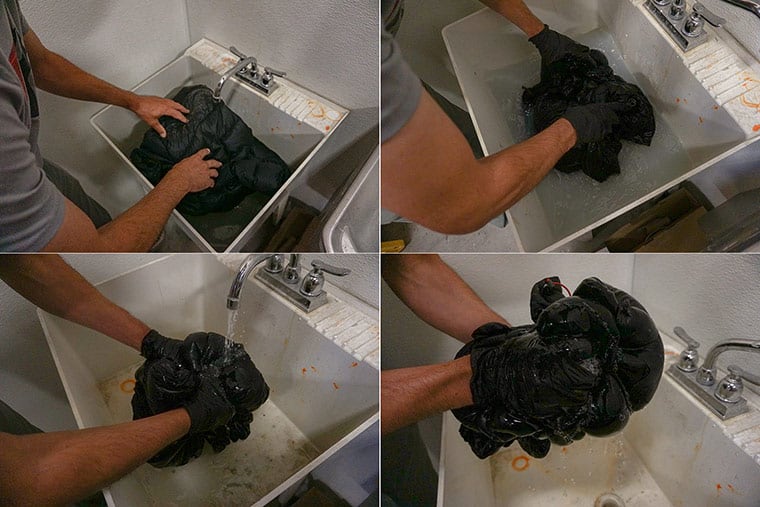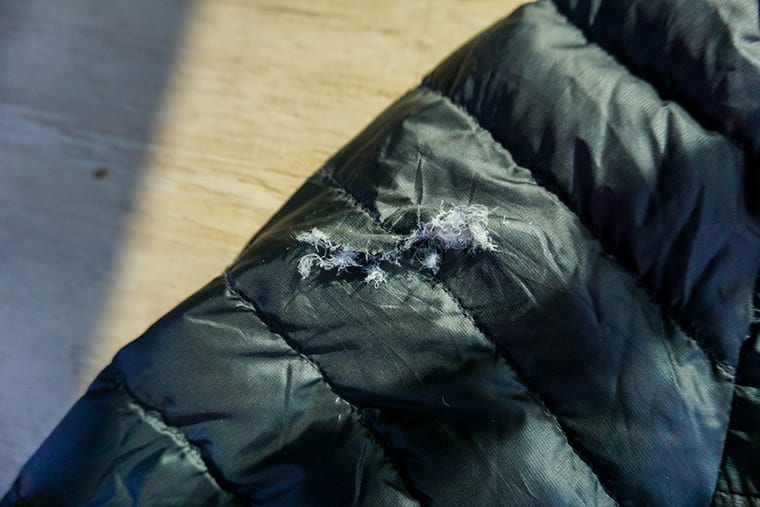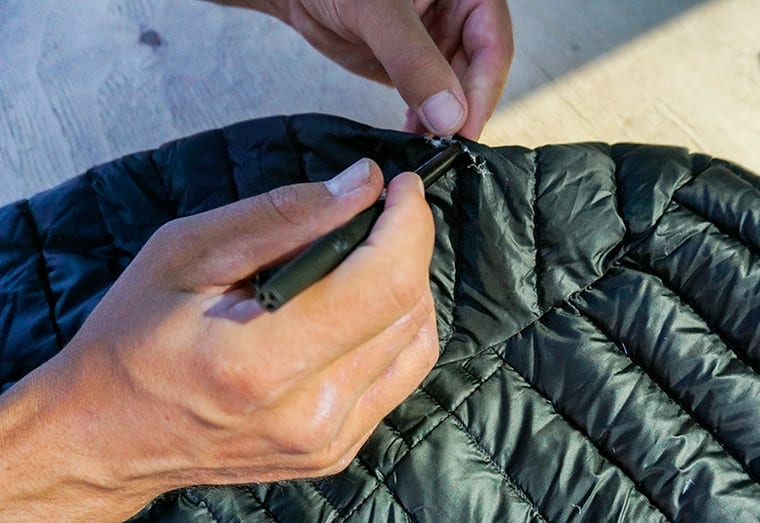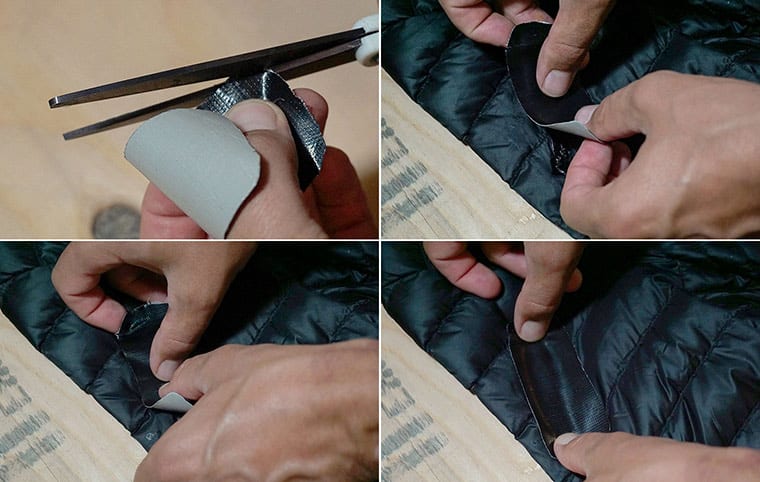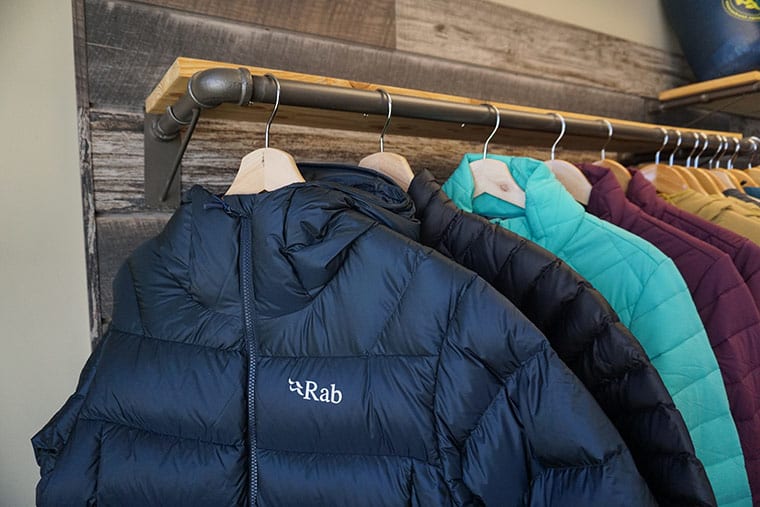Make It Last: Down Jackets
Posted by Garson Fields on 15th Sep 2020
Make It Last is dedicated to getting the most out of your gear. This is our place to share knowledge acquired over years of abusing outdoor equipment, so you can learn from our experience and our mistakes. We want you to use your gear, patch it up until you can’t anymore, and enjoy it to the fullest. And when you finally need a new piece, we can help you with that too.
If you ask anyone who spends time outdoors what their most used piece of gear is, there’s a good chance that the answer is going to be their down jacket.
Especially in cold climates, there’s arguably no piece of gear that you’ll wear as often. As an insulating material, down does a remarkable job of keeping you warm, plus it’s light and packable. Although it loses loft when wet, the advent of waterproof down, as well as hybrid down jackets that mix synthetic and down insulation, have made one of nature’s most efficient insulators even more versatile.
Down jackets typically get worn most days throughout the winter for everything from skiing to shoveling, and they’re a lifesaver for summer camping at elevation. Yet, for a piece of gear that’s generally built from lightweight materials, down jackets get put through the wringer.
They’re also expensive, which makes it painful to replace one prematurely.
Like any piece of gear, down jackets need care and maintenance to last. However, the abundance of well-loved down jackets you’ll find at any outdoor recreation hub points to the fact that you can easily get years of faithful service out of your own with proper care.
Washing
Washing your down jacket is important, and not just to keep you smelling and looking fresh. A shocking number of down jackets get destroyed not by rips and tears, but by being washed the wrong way.
Nikwax recommends wearing rubber gloves when washing down gear, as Down Wash Direct can be harsh on the hands, especially for those with sensitive skin. Once the detergent has been massaged into the garment and left to soak, make sure to rinse the garment using cool water before drying.
One of the easiest ways to destroy your down jacket is to wash it using the wrong detergent. Conventional detergents can and will permanently strip down feathers of their natural oils. This causes the individual strands of the down feathers to stick together, compressing the down and destroying its loft, which is the characteristic that gives down its warmth.
The key is to use a dedicated down cleaning detergent. There are plenty of great options out there. We’re partial to the Storm Down Care Kit because it includes a secondary treatment that improves down’s water resistance. However, we also recommend Nikwax Down Wash Direct , which has an unimpeachable track record and is widely available.
Down is delicate, so it’s best to avoid washing your jacket in a top loading washing machine. Use a front loader and a cold wash cycle, or if you don’t have access to one, you can also wash it in the sink in cool water, giving it time to soak and gently working the detergent into the jacket.
Drying
The drying process contributes to the loftiness of your newly washed down jacket, and doing it correctly takes a day or two. Don’t rush it.
First, you’ll want to remove your jacket from the washing machine or the sink and place it flat on a drying rack. You can gently squeeze water out of the jacket, but do not wring out the jacket.
Your jacket will be wet at this point, and it will need to air dry. Depending on humidity, air drying a down coat typically takes one to two days.
You can air dry the jacket completely, and when it’s done, gently compress and expand the jacket a few times to fully restore its loft. Or, if you have a drying machine and some tennis balls that aren’t dog toys, you can toss the mostly dry jacket into the dryer on a low heat cycle. The tennis balls will also restore down’s loft. The bonus is that the heat from the dryer will help to reactivate your jacket’s DWR coating, which allows water to bead off the jacket’s surface.
Patching
The delicate face fabric of a down jacket is vulnerable to snags, tears, burns, and cuts. Any opening in the face fabric presents an opportunity for down to escape, robbing you of precious warmth.
More often than not, by the time you realize you have a hole, there will already be down starting to escape. We’ve found that using a pen or pencil is the easiest way to push down back into the hole without making a mess.
There are plenty of ways to patch holes. We like Gear Aid’s Tenacious Tape because it’s available in clear, making it a great choice if you’re repairing a brightly colored jacket.
However, if you don't have any Tenacious Tape handy, duct tape will do just fine. Most of us carry some in our emergency kits, and effective, long lasting repairs can be made in just a minute or two, even in the field. If you have access to rubbing alcohol, use it to clean the area where the patch will be applied, as dirt or grime on the fabric will make the patch less effective. Use scissors to round off the square edges of the tape patch, as it will also help to keep the patch from peeling. For best results, start by applying pressure to the middle of the patch and massage outward to smooth out any wrinkles.
If you’re a perfectionist and the hole is small, either a minor cut or a burn hole from a stray ember, use Seam Grip. This waterproof sealing adhesive is designed for repairing tents, so it’s extremely durable, and it’s made from urethane, so it stays flexible in the cold. Plus it’s clear, so as long as you’re careful with your repair, it should be all but invisible once you’re done.
However, getting a good result with Seam Grip requires a steady hand, a clean workspace, and plenty of time to cure and reapply as necessary, so this repair is best handled after you get home after a trip. Additionally, it can be difficult to get good results on bigger cuts. For those, we recommend using tape.
In researching this article, we attempted this ambitious cross-baffle Seam Grip repair. Although the result looked passable, the size and location of the hole made a future failure likely, so we ultimately opted to tape it for peace of mind. If there’s any doubt about the durability of your own repair, we suggest you do the same.
Finally, don’t bother with your sewing kit to make a repair. The lightweight face fabrics found on most down jackets are not suited to hand mending, and even tidy stitching will pull out, leaving you with a bigger hole than you started with.
Storage
There’s nothing wrong with compressing your down jacket for a few days in a pack, but storing it for months at a time in a compressed state will reduce the down’s loft. When it’s not in use, hang your down jacket in a closet or on a coat rack. In addition to protecting the insulation, it also gives your jacket a chance to dry and air out, which will help to keep it smelling fresh.
Conclusion
The lifespan of your down jacket is determined by how you treat it. Don’t treat it like it’s disposable. Care for it correctly and you’ll enjoy years of comfort in a piece of gear that will gain character as the miles and stories add up.
About Campman
Campman is an outdoor retail store located in Salt Lake City, Utah, that specializes in gear and equipment for camping, skiing, backpacking, climbing, and everything in between. We understand that the difference between a bad memory and the adventure of a lifetime can come down to the gear you take with you when you head outdoors, and we want our customers to have the best experiences possible. When it comes to getting outside, we get it, and we’ll get you the gear you need to get there.
Questions? Feel free to contact us by phone at (801) 999-8117 or by email at sales@campman.com.
Share on:


